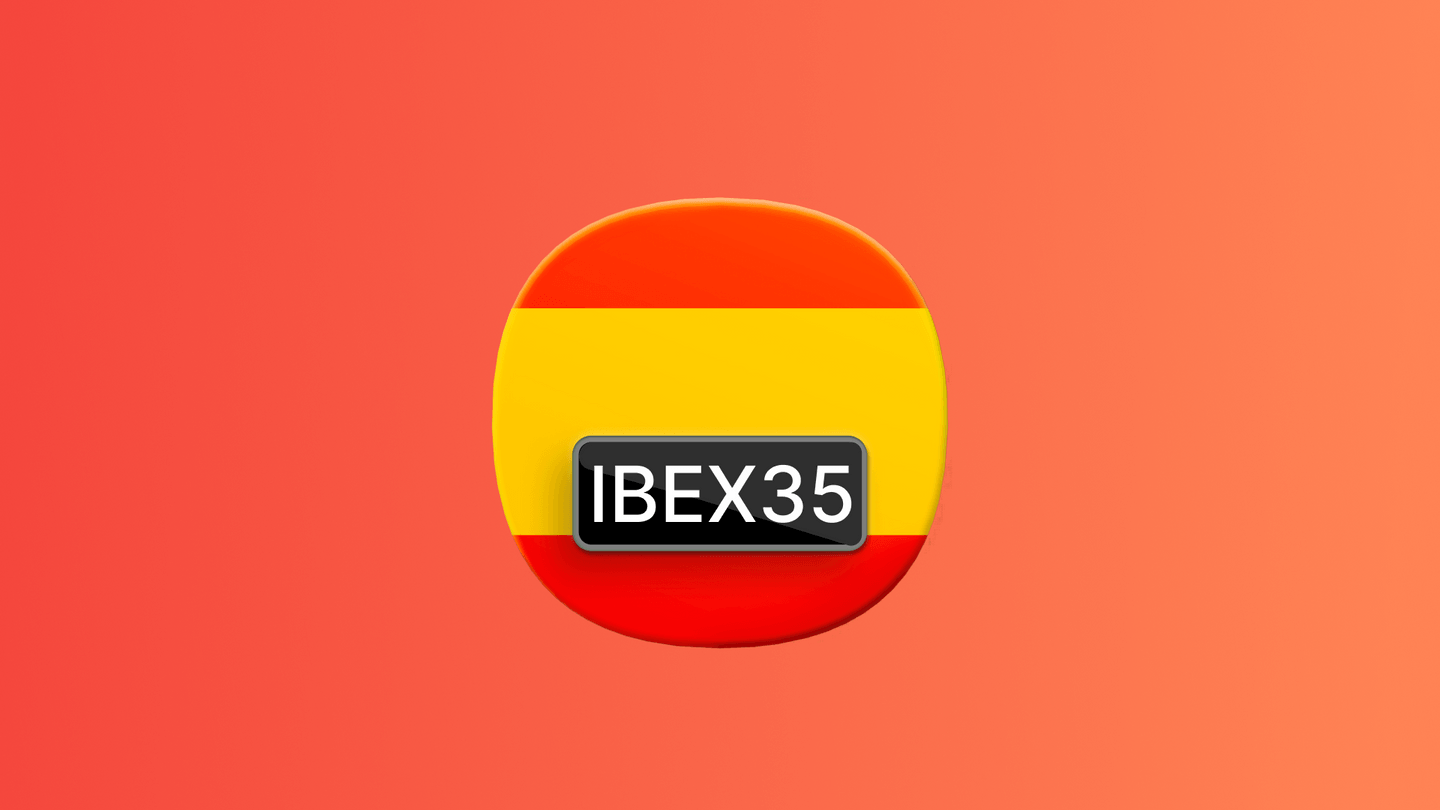Regardless of their level of expertise, trading with stock indices is very common among different types of traders. For those who are not familiar with indices in general - an index can be described as an aggregate (consolidated) portfolio of stocks of different companies known as the “index basket,” the total value of which is estimated based on their prices.
An index basket can be a group of stocks put together on the basis of geographical location, industry, or any other parameter. Examples of indices by country are OMX Tallinn for Estonia, DAX 40 for Germany, and IBEX 35 for Spain. Today, we are going to look into all you need to know about the Spanish IBEX 35.

What Is the IBEX 35 Index?
IBEX35 (Iberia Index) is a stock index of the Madrid Stock Exchange – the main stock exchange in Spain. As can be concluded from the name, it consists of shares of the 35 most liquid companies - all of them are traded on the exchange and affect the final index’s rate. The list of these companies is dynamic and is reviewed by a dedicated committee twice a year. IBEX 35 is calculated on the basis of free-float market capitalizations, with the weighting of companies not being capped.
IBEX 35 is managed by Sociedad de Bolsas – a subsidiary of Bolsas y Mercados Españoles. The first index was calculated in 1989, December 29, but initially, it was mainly used as an internal instrument. IBEX 35 went public officially on January 14, 1992. As of March 2, 2022, its total capitalization exceeds €320 billion.
Companies that constitute IBEX 35 are not necessarily the largest on the market but are rather the most liquid ones. But meeting the criteria for liquidity and trading volume is not sufficient for a company to join IBEX 35 – the commission also takes into account a number of other factors.
Admission to the IBEX 35 Index
The companies constituting the IBEX 35 index are reviewed every 6 months. They must meet a list of requirements for at least 6 months before the committee meeting:
- The average capitalization for at least 6 months must be over 0.3% of the average capitalization of the entire IBEX 35. It means that small-cap companies are not included. Shares must be traded in at least one-third of the trading days during the previous six months.
- The capitalization filter is a major one. If a company is in the TOP20 – it’s guaranteed to be included in the IBEX 35 index. This will hold true even if the requirement for the number of trading days is not met.
After the Committee has made a decision to include shares of a certain company in the basket, the number of securities that will be taken into account when calculating the IBEX 35 index is determined. The number of stocks is based on the security’s free float. The free float, in turn, is the number of shares “floating” freely on the market, i.e., not owned by any direct shareholders.
There are no generally accepted growth leaders among the index participants; each of the participants has a significant impact on a specific area of the economy. Within the framework of the Madrid Stock Exchange, there is another IGBM index, which has over 115 members. But given the complexity of the calculations and the huge number of factors affecting the price of shares, IBEX 35 is significantly easier to work with.
Due to multidirectional market movements and the heterogeneity of IBEX 35 participants, even at times of local crisis, the value of the IBEX remains relatively high. Another distinctive feature of this index is that the participating companies account for 90% of all funds that circulate on the Spanish stock exchange.
How Is the IBEX 35 Calculated?
The calculation of the IBEX 35 index is performed using the following formula:

where t is the time when the index is calculated; Cap stands for the free-float market cap of a specific listing, and J is a coefficient that allows correcting due to capital increases or other corporate actions to ensure continuity.
To calculate the value of IBEX 35 on a certain day, a previous session is taken as a base. It’s needed to multiply that value by the percentage received from a division of the total capitalization value of all 35 companies involved in the index by the sum of the capitalizations of the index values of the previous day.
In case of operations that can lead to wrong results, a corrective weighting value (J) coefficient is applied to the latter capitalizations.
The capitalization of a company is calculated by multiplying the number of stocks of each corporation by the market value on the current day.
IBEX 35 Companies
IBEX 35 comprises 35 companies, the top 5 of which are:
- Inditex SA, market cap in M - 78,670.79 EUR – retailer, famous in multiple countries all over the world.
- Iberdrola, market cap in M - 66,195.08 EUR - operates in the field of electricity and its delivery to the end consumer.
- Banco Santander, market cap in M - 54,329.04 EUR - represents the financial sector, known in Spain for being its largest financial and credit group player.
- Banco Bilbao Vizcaya Arge, market cap in M - 36,878.35 EUR – another multinational financial service company, with headquarters in Madrid and Bilbao.
- Cellnex Telecom, market cap in M - 30,016.68 EUR – a multinational telecommunications company.
The full list of companies is presented in the table below as of March 2, 2022:
Company | Turnover (€ Thousands) |
4,430.58 | |
11,965.56 | |
7,460.64 | |
16,300.19 | |
1,533.05 | |
14,217.16 | |
30,485.20 | |
BANCO SANTANDER | 58,607.80 |
17,205.42 | |
5,458.73 | |
39,893.58 | |
15,607.20 | |
19,117.98 | |
3,633.69 | |
4,479.58 | |
12,931.17 | |
7,393.80 | |
7,116.08 | |
12,006.82 | |
29,398.22 | |
52,147.34 | |
76,893.52 | |
6,634.00 | |
2,152.61 | |
3,372.95 | |
2,645.72 | |
1,744.18 | |
3,594.06 | |
4,467.56 | |
8,167.58 | |
118,051.03 | |
2,208.81 | |
19,391.35 | |
11,227.01 | |
23,661.19 |
Although 35 companies may not seem like a lot, the provider managed to maintain a wide degree of diversification and stay relatively unbiased to all sectors. However, the index is characterized by a slight dominance of oil & gas, as well as financial industries, that account for almost 50% of the entire basket.
IBEX 35 is known for being stable: the companies that comprise the basket are replaced relatively rarely, and, usually, no more than 1-2 positions are changed. There was only 1 case with 5 companies being changed simultaneously.
Historical Performance of IBEX 35
Experts note that the IBEX 35 index started positioning itself well immediately after its emergence. It was showing a strong positive trend, in many cases being more stable than other world-famous indices. Starting with the base value of 3,000 as of December 29, 1989, it peaked in March 2000 at 12,968 – from there, it gradually started falling. Since the autumn of 2002, IBEX began to grow again and in November 2007 set an all-time high at 16,040.40. After that, it went into a rollback, and the correction continued until the winter of 2009.
Eventually, the situation with IBEX 35 leveled off, and there was a slight increase, although, over the past few years, the index has gravitated towards a horizontal trend. So far, there are no patterns that suggest IBEX is changing that position anytime soon.
IBEX 35 Sector Breakdown
The IBEX 35 index can be broken down into 5 main sectors, the details of which are presented below:
Sector | Weight |
Utilities | 28% |
Financials | 17% |
Industrials | 14% |
Consumer Discretionary | 13% |
Communication Services | 12% |
Moreover, it is worth pointing out that the IT, Healthcare, Energy, and Real Estate sectors together account for just 16% of the index.
Why Trade the IBEX 35 Index?
A logical question that might come into your mind is, “But why should I trade IBEX 35? What’s in it for me?” Let’s look at a few advantages of doing so:
- The majority of participants are companies that operate in the real sector;
- High level of capitalization - over 320 billion euros;
- Fair valuation of participants - all values are determined and approved by the Technical Committee;
- Reflects the financial environment not only in Spain but in the entire Eurozone;
- The index is highly volatile. However, if you are experienced enough, you can succeed.
If you trade IBEX 35 with the NAGA trading platform, there is no commission on your trading positions, and there is access to up to 1:20 leverage. Please remember that leverage leads to increased risks of money loss.
As you can see, all this contributes to the attractiveness of trading IBEX 35. Let’s look at how you can do so.
What Factors Affect the Price of IBEX 35?
Fortunately, you wouldn’t need to research and get into the details of every company in the portfolio, as the total value depends on the state of affairs in the industries that are most commonly represented in it (metallurgy, energy, construction, banking, etc.).
The composition of participants changes periodically; therefore, the degree of influence of the situation in some industries may increase or decrease. The growth of the shares of one, not the top company, belonging to a different sector than the leaders in terms of capitalization, will not play a significant role. Nevertheless, the financial statements of the largest companies are important.
The IBEX 35 rate is strongly related to the general economic situation in the Eurozone and the monetary policy of the ECB. However, due to good diversification, even against the background of the debt crisis, it showed itself quite confidently, despite the fact that Spain is one of the most economically weak states.
How to Trade IBEX 35?
Getting involved in IBEX 35 trading is an opportunity to access the Spanish stock market without having to analyze individual companies, as it already presents you with a portfolio of companies. The Spanish financial index IBEX 35 provides traders with a high degree of liquidity and tight spreads.
One of the easiest and most popular ways to trade the IBEX 35 Index is CFDs (Contracts for Difference) – a “contract between a trader and a broker to profit from the price difference between opening and closing prices.”
There are a few ways to trade IBEX 35 CFDs, one of which is using the Naga platform. All you need to do is create an account and pass a quick verification check – this will give you access to thousands of assets, including IBEX 35 CFDs. You will be able to trade long or short without having to worry about hidden fees or the speed of the order.

Regardless of how you think IBEX 35 will behave, you can benefit from price movements up or down in the future. The IBEX 35 Index has good volume and volatility, as it consists of a wide range of liquid trading instruments. This is one of the main reasons this index is popular with CFD traders worldwide.
Conclusion
In general, the Spanish stock index IBEX 35 is a reliable tool for understanding the situation of the country’s economy, as well as the overall world market situation. It is extremely useful for those who wish to learn about the macroeconomic “climate” of the European Union and the global financial system, and use this knowledge to predict their trading strategies.


